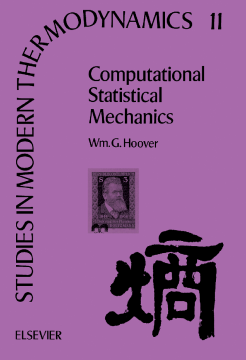
Additional Information
Book Details
Abstract
Computational Statistical Mechanics describes the use of fast computers to simulate the equilibrium and nonequilibrium properties of gases, liquids, and solids at, and away from equilibrium. The underlying theory is developed from basic principles and illustrated by applying it to the simplest possible examples.
Thermodynamics, based on the ideal gas thermometer, is related to Gibb's statistical mechanics through the use of Nosé-Hoover heat reservoirs. These reservoirs use integral feedback to control temperature. The same approach is carried through to the simulation and analysis of nonequilibrium mass, momentum, and energy flows. Such a unified approach makes possible consistent mechanical definitions of temperature, stress, and heat flux which lead to a microscopic demonstration of the Second Law of Thermodynamics directly from mechanics. The intimate connection linking Lyapunov-unstable microscopic motions to macroscopic dissipative flows through multifractal phase-space structures is illustrated with many examples from the recent literature.
The book is well-suited for undergraduate courses in advanced thermodynamics, statistical mechanic and transport theory, and graduate courses in physics and chemistry.
